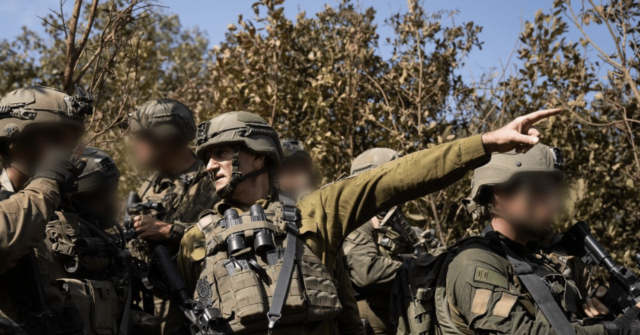Israel Defense Forces (IDF) Chief of Staff Lt. Gen. Herzi Halevi recently conducted a tour of southern Lebanon, providing an update on Israel’s military efforts in the region. According to the IDF, Israeli forces have reportedly killed approximately 1,500 Hezbollah operatives as part of their ongoing operations. This announcement emphasizes the IDF’s objective to significantly undermine Hezbollah’s operational capabilities and leadership structure. During his visit, Halevi met with various military commanders and expressed confidence in the IDF’s ability to disrupt Hezbollah’s command and control systems, suggesting that the organization is facing unprecedented losses.
Halevi outlined the IDF’s strategy, noting a concerted effort to eliminate both senior and local command levels within Hezbollah. He stressed that the organization is suffering critical damage to its leadership and operational integrity. By targeting key figures and infrastructure, the IDF aims not only to incapacitate Hezbollah’s immediate military capabilities but also to instill a sense of panic and demoralization within the ranks of the group. This, according to Halevi, is evidenced by reported surrenders and a decline in Hezbollah’s overall morale, reflecting the effectiveness of the IDF’s operations.
The IDF Chief of Staff asserted that the intentional tactical choices made by the military forces are yielding significant results, noting that even Iran, Hezbollah’s primary backer, may not fully comprehend the extent of Hezbollah’s difficulties on the ground. Halevi indicated that the IDF is committed to maintaining a relentless pressure on Hezbollah, unveiling a strategy of continuous and unexpected assaults that aim to further dismantle the group’s operational capabilities. The message is clear: the IDF intends not just to deter but to systematically erode Hezbollah’s influence and effectiveness in southern Lebanon.
In a notable update, the IDF also reported the killing of Mahmoud Hamdan, a significant commander of Hamas’ Tel al-Sultan Battalion. Hamdan had been previously misreported as dead and was found to be overseeing operations related to the murders of six hostages in the area. His elimination highlights the ongoing focus of the IDF on dismantling leadership within militant organizations, both in Lebanon with Hezbollah and in Gaza with Hamas. This targeted approach underscores an overarching strategy to neutralize figures directly implicated in hostility against Israel.
The developments surrounding the IDF’s military efforts reveal a broader intent to bolster Israel’s security by actively engaging and eliminating threats presented by both Hezbollah and Hamas. The killing of high-ranking officials within these groups serves not just as a tactical victory, but also as a strategic message to deter future aggression. By showcasing its operational successes, the IDF aims to demonstrate Israel’s resolve in safeguarding its national interests and combating those who threaten its security.
In summary, the recent actions taken by the IDF indicate a calculated and intensive military strategy aimed at dismantling Hezbollah’s command structure and reducing Hamas’ operational capacity. The reported losses inflicted on these groups serve to reinforce the narrative of Israeli military efficacy, instilling a newfound sense of urgency within their ranks. As these confrontations continue, the unfolding situation in southern Lebanon and Gaza highlights the complex interplay of military tactics, regional security dynamics, and the broader goals of Israeli defense policy in mitigating threats against its sovereignty.

